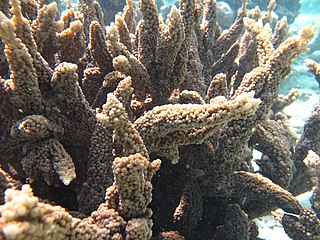 W
WAcropora hemprichii is a species of acroporid coral that was first described by Christian Gottfried Ehrenberg in 1834. Found in shallow reefs in marine environments, this species occurs at depths of 3 to 15 m, and lives for between 13 and 24 years. The species is listed as vulnerable on the IUCN Red List, and has a decreasing population. It is common with a wide range, and is listed on Appendix II of CITES.
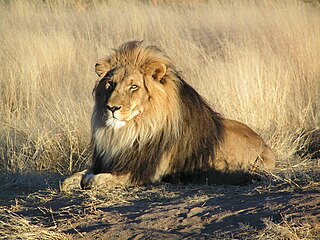 W
WThe lion is a species in the family Felidae and a member of the genus Panthera. It has a muscular, deep-chested body, short, rounded head, round ears, and a hairy tuft at the end of its tail. It is sexually dimorphic; adult male lions have a prominent mane. With a typical head-to-body length of 184–208 cm (72–82 in) they are larger than females at 160–184 cm (63–72 in). It is a social species, forming groups called prides. A lion pride consists of a few adult males, related females and cubs. Groups of female lions usually hunt together, preying mostly on large ungulates. The lion is an apex and keystone predator; although some lions scavenge when opportunities occur and have been known to hunt humans, the species typically does not.
 W
WThe Aldabra flying fox is a species of megabat in the genus Pteropus. It is endemic to the Aldabra Atoll in the Seychelles, like Chaerephon pusilla, though the latter may be the same species as the little free-tailed bat.
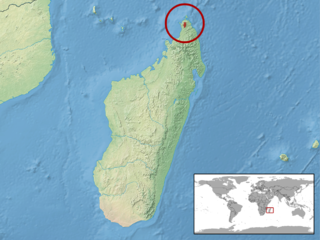 W
WThe Antakarana leaf chameleon, Brookesia antakarana, is a species of chameleon.
 W
WFurcifer antimena, also known as the Antimena chameleon, is a species of chameleon that is endemic to southwest Madagascar. It was initially described by French naturalist Alfred Grandidier in 1872.
 W
WThe Barbary sheep, also known as the arrui or aoudad, is a species of caprid native to rocky mountains in North Africa. Six subspecies have been described. Although it is rare in its native North Africa, it has been introduced to North America, southern Europe, and elsewhere. It is also known in the Berber language as awdad, waddan, arwi, and arrwis.
 W
WThe bigeye thresher is a species of thresher shark, family Alopiidae, found in temperate and tropical oceans worldwide. Like other thresher sharks, nearly half its total length consists of the elongated upper lobe of the tail fin. Its common name comes from its enormous eyes, which are placed in keyhole-shaped sockets that allow them to be rotated upward. This species can also be distinguished by a pair of deep grooves on the top of its head, from which its scientific name is derived.
 W
WThe black colobus, or satanic black colobus, is a species of Old World monkey belonging to the genus Colobus. The species is found in a small area of western central Africa. Black colobuses are large, completely covered with black fur, and like all other Colobus monkeys, do not have a thumb. The species has faced large declines in population due to habitat destruction and hunting by humans, and was consequently listed as Vulnerable on the IUCN Red List in 1994.
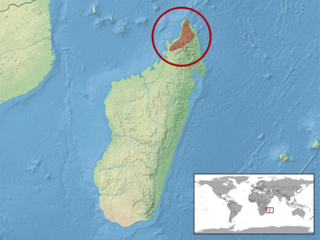 W
WBrookesia ebenaui is a chameleon, a lizard in the family Chamaeleonidae. The species, which is endemic to Madagascar, can rapidly change color among various earth hues.
 W
WBrookesia griveaudi, commonly known as the Marojejy leaf chameleon, is a species of chameleon, a lizard in the family Chamaeleonidae. The species is endemic to northeastern Madagascar. It was described as a species new to science by Brygoo, Blanc, and Domergue in 1974. It is listed as Near Threatened by the International Union for Conservation of Nature.
 W
WThe brown-tailed mongoose, Malagasy brown-tailed mongoose, or salano is a species of mammal in the family Eupleridae. It is endemic to Madagascar. Its natural habitat is subtropical or tropical dry forests. It is threatened by habitat loss.
 W
WThe Uluguru bushbaby, also known as the mountain dwarf galago or the Amani dwarf galago, is a species of primate in the family Galagidae. Like all galagos, it is a strepsirrhine primate. It is endemic to the Eastern Arc Mountains of Kenya and Tanzania at altitudes of 1,200 - 2,000 m. It has its own set of unique calls, which helps distinguish it from other species of bushbaby.
 W
WThe Canary Islands large white is a species of butterfly in the family Pieridae. It is endemic to the Canary Islands (Spain).
 W
WChrysoritis bamptoni is a species of butterfly in the family Lycaenidae. It is endemic to South Africa. It is now mostly considered a subspecies of Chrysoritis thysbe.
 W
WThe Atlantic humpback dolphin is a species of humpback dolphin that is found in coastal areas of West Africa.
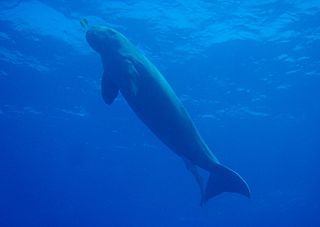 W
WThe dugong is a medium-sized marine mammal. It is one of four living species of the order Sirenia, which also includes three species of manatees. It is the only living representative of the once-diverse family Dugongidae; its closest modern relative, Steller's sea cow, was hunted to extinction in the 18th century.
 W
WBeaudouin's snake eagle is a species of snake eagle in the family Accipitridae found in the Sahel region of west Africa. It forms a superspecies with the Palearctic short-toed snake eagle Circaetus gallicus and the black-chested snake eagle Circaetus pectoralis. This bird seems to be declining in numbers and the International Union for Conservation of Nature has rated it as a "vulnerable species".
 W
WThe African bush elephant, also known as the African savanna elephant, is the largest living terrestrial animal with bulls reaching a shoulder height of up to 3.96 m (13.0 ft). Both sexes have tusks, which erupt when they are 1–3 years old and grow throughout life.
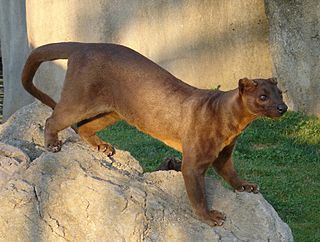 W
WThe fossa is a cat-like, carnivorous mammal endemic to Madagascar. It is a member of the Eupleridae, a family of carnivorans closely related to the mongoose family Herpestidae. Its classification has been controversial because its physical traits resemble those of cats, yet other traits suggest a close relationship with viverrids. Its classification, along with that of the other Malagasy carnivores, influenced hypotheses about how many times mammalian carnivores have colonized Madagascar. With genetic studies demonstrating that the fossa and all other Malagasy carnivores are most closely related to each other forming a clade, recognized as the family Eupleridae, carnivorans are now thought to have colonized the island once, around 18 to 20 million years ago.
 W
WFurcifer timoni is a species of chameleon, a lizard in the family Chamaeleonidae. The species is endemic to Madagascar.
 W
WThe giraffe (Giraffa) is an African artiodactyl mammal, the tallest living terrestrial animal and the largest ruminant. It is traditionally considered to be one species, Giraffa camelopardalis, with nine subspecies. However, the existence of up to eight extant giraffe species has been described, based upon research into the mitochondrial and nuclear DNA, as well as morphological measurements of Giraffa. Seven other species are extinct, prehistoric species known from fossils.
 W
WThe Glass's shrew is a species of mammal in the family Soricidae. It is endemic to Ethiopia. The mammal's natural habitats are subtropical or tropical high-altitude shrubland, subtropical or tropical high-altitude grassland, and swamps. It is threatened by habitat loss.
 W
WThe smooth hammerhead is a species of hammerhead shark, and part of the family Sphyrnidae. This species is named "smooth hammerhead" because of the distinctive shape of the head, which is flattened and laterally extended into a hammer shape, without an indentation in the middle of the front margin. Unlike other hammerheads, this species prefers temperate waters and occurs worldwide at medium latitudes. In the summer, these sharks migrate towards the poles following cool water masses, sometimes forming schools numbering in the hundreds to thousands.
 W
WThe hippopotamus, also called the hippo, common hippopotamus or river hippopotamus, is a large, mostly herbivorous, semiaquatic mammal and ungulate native to sub-Saharan Africa. It is one of only two extant species in the family Hippopotamidae, the other being the pygmy hippopotamus. The name comes from the ancient Greek for "river horse" (ἱπποπόταμος). After the elephant and rhinoceros, both of which are found in Africa, the hippopotamus is the third-largest type of land mammal and the heaviest extant artiodactyl. Despite their physical resemblance to pigs and other terrestrial even-toed ungulates, the closest living relatives of the Hippopotamidae are cetaceans from which they diverged about 55 million years ago.
 W
WThe flapnose houndshark is a houndshark of the family Triakidae, and the only member of the genus Scylliogaleus. It is found in the waters off subtropical South Africa, in the western Indian Ocean between latitudes 27 and 33°S, estimated to be 2 to 4 feet in length. Not seen by biologists since 1902, one was captured in 2020 on the show Extinct or Alive. It was tagged with a pop-up tracking sensor and released.
 W
WThe Iaraka River leaf chameleon, also commonly known as the mossy pygmy leaf chameleon, is a species of chameleon, a lizard in the family Chamaeleonidae. The species is endemic to Madagascar.
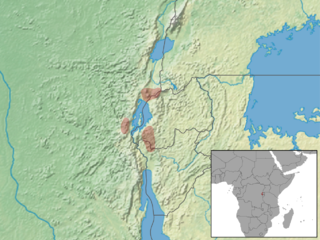 W
WKemp's thicket rat is a species of rodent in the family Muridae. It is found in Burundi, Democratic Republic of the Congo, and Rwanda. Its natural habitat is subtropical or tropical moist montane forests. It is threatened by habitat loss.
 W
WLabord's chameleon is a semelparous species of chameleon, a lizard in the family Chamaeleonidae. The species is endemic to Madagascar.
 W
WThe leatherback sea turtle, sometimes called the lute turtle or leathery turtle or simply the luth, is the largest of all living turtles and is the fourth-heaviest modern reptile behind three crocodilians. It is the only living species in the genus Dermochelys and family Dermochelyidae. It can easily be differentiated from other modern sea turtles by its lack of a bony shell, hence the name. Instead, its carapace is covered by skin and oily flesh.
 W
WThe lion is a species in the family Felidae and a member of the genus Panthera. It has a muscular, deep-chested body, short, rounded head, round ears, and a hairy tuft at the end of its tail. It is sexually dimorphic; adult male lions have a prominent mane. With a typical head-to-body length of 184–208 cm (72–82 in) they are larger than females at 160–184 cm (63–72 in). It is a social species, forming groups called prides. A lion pride consists of a few adult males, related females and cubs. Groups of female lions usually hunt together, preying mostly on large ungulates. The lion is an apex and keystone predator; although some lions scavenge when opportunities occur and have been known to hunt humans, the species typically does not.
 W
WThe Madeira pipistrelle is a species of vesper bat. It is endemic to Azores, Madeira and the Canary Islands.
 W
WThe mandrill is a primate of the Old World monkey (Cercopithecidae) family. It is one of two species assigned to the genus Mandrillus, along with the drill. Both the mandrill and the drill were once classified as baboons in the genus Papio, but they now have their own genus, Mandrillus. Although they look superficially like baboons, they are more closely related to Cercocebus mangabeys. Mandrills are found in southern Cameroon, Gabon, Equatorial Guinea, and Congo. Mandrills mostly live in tropical rainforest and in very large groups. Mandrills have an omnivorous diet consisting mostly of fruits and insects. Their mating season peaks in July to September, with a corresponding birth peak in December to April.
 W
WThe collared mangabey, also known as the red-capped mangabey, or the white-collared mangabey, is a species of primate in the family Cercopithecidae of Old World monkeys. It formerly included the sooty mangabey as a subspecies. As presently defined, the collared mangabey is monotypic.
 W
WThe black crested mangabey is a species of primate in the family Cercopithecidae. It is found in Angola and Democratic Republic of the Congo. Its natural habitat is subtropical or tropical dry forests. It is threatened by habitat loss.
 W
WMehely's horseshoe bat is a species of insectivorous bat in the family Rhinolophidae found in Southern Europe and parts of the Middle East. It is distributed in a narrow band around the Mediterranean Sea from North-Western Africa across Portugal, Spain, the Balearics, southern France, Sardinia, Sicily and the Balkan Peninsula to Asia Minor.
 W
WThe Montagne d'Ambre leaf chameleon is a diminutive chameleon from far northern Madagascar.
 W
WThe Mozambique tilapia is an oreochromine cichlid fish native to southeastern Africa. Dull colored, the Mozambique tilapia often lives up to a decade in its native habitats. It is a popular fish for aquaculture. Due to human introductions, it is now found in many tropical and subtropical habitats around the globe, where it can become an invasive species because of its robust nature. These same features make it a good species for aquaculture because it readily adapts to new situations. It is known as black tilapia in Colombia and as blue kurper in South Africa.
 W
WThe Mozambique tilapia is an oreochromine cichlid fish native to southeastern Africa. Dull colored, the Mozambique tilapia often lives up to a decade in its native habitats. It is a popular fish for aquaculture. Due to human introductions, it is now found in many tropical and subtropical habitats around the globe, where it can become an invasive species because of its robust nature. These same features make it a good species for aquaculture because it readily adapts to new situations. It is known as black tilapia in Colombia and as blue kurper in South Africa.
 W
WThe tree pangolin is one of eight extant species of pangolins, and is native to equatorial Africa. Also known as the white-bellied pangolin or three-cusped pangolin, it is the most common of the African forest pangolins.
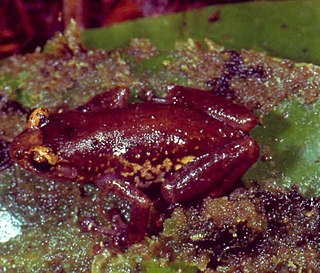 W
WPlatypelis tsaratananaensis is a species of frog in the family Microhylidae.
 W
WThe reef manta ray is a species of ray in the family Mobulidae, one of the largest rays in the world. Among generally recognized species, it is the second-largest species of ray, only surpassed by the giant oceanic manta ray.
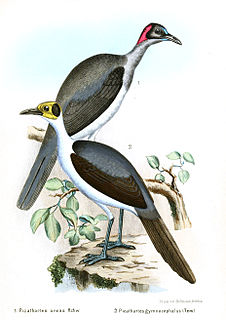 W
WThe grey-necked rockfowl is a medium-sized bird in the family Picathartidae with a long neck and tail. Also known as the grey-necked picathartes, this passerine is mainly found in rocky areas of close-canopied rainforest from south-west Nigeria through Cameroon, Equatorial Guinea, and south-west Gabon. It additionally lives on the island of Bioko. Its distribution is patchy, with populations often isolated from each other. The rockfowl typically chooses to live near streams and inselbergs in its forested habitat. It has no recognized subspecies, though some believe that it forms a superspecies with the white-necked rockfowl. The grey-necked rockfowl has grey upperparts, a light grey breast, and lemon-coloured underparts. Its unusually long tail is used for balance, and its thighs are muscular. The head is nearly featherless, with the exposed skin being powder blue on the forehead and upper mandible and carmine on the hindcrown. The bird's cheeks and eyes are covered in a large, circular black patch that, though narrow, connects and divides the carmine and powder blue skin at the peak of the crown. Though the bird is usually silent, some calls are known.
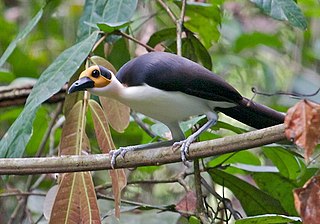 W
WThe white-necked rockfowl is a medium-sized bird in the family Picathartidae, with a long neck and tail. Also known as the white-necked picathartes, this passerine is mainly found in rocky forested areas at higher altitudes in West Africa from Guinea to Ghana. Its distribution is patchy, with populations often being isolated from each other. The rockfowl typically chooses to live near streams and inselbergs. It has no recognized subspecies, though some believe that it forms a superspecies with the grey-necked rockfowl. The white-necked rockfowl has greyish-black upperparts and white underparts. Its unusually long, dark brown tail is used for balance, and its thighs are muscular. The head is nearly featherless, with the exposed skin being bright yellow except for two large, circular black patches located just behind the eyes. Though the bird is usually silent, some calls are known.
 W
WThe brown-tailed mongoose, Malagasy brown-tailed mongoose, or salano is a species of mammal in the family Eupleridae. It is endemic to Madagascar. Its natural habitat is subtropical or tropical dry forests. It is threatened by habitat loss.
 W
WSardinella maderensis is a species of small ray-finned fish in the genus Sardinella which is found in the Eastern Atlantic and Southeastern Mediterranean. it is a silvery fish similar to the round sardinella, but can be distinguished from that species by having gray caudal fins with black tips. It feeds on phytoplankton and fish larvae and is a pelagic, oceanodromous species that forms schools in coastal waters, often mixed with S. aurita. The International Union for Conservation of Nature has rated this fish's conservation status as "vulnerable".
 W
WThe flapnose houndshark is a houndshark of the family Triakidae, and the only member of the genus Scylliogaleus. It is found in the waters off subtropical South Africa, in the western Indian Ocean between latitudes 27 and 33°S, estimated to be 2 to 4 feet in length. Not seen by biologists since 1902, one was captured in 2020 on the show Extinct or Alive. It was tagged with a pop-up tracking sensor and released.
 W
WThe dusky shark is a species of requiem shark, in the family Carcharhinidae, occurring in tropical and warm-temperate continental seas worldwide. A generalist apex predator, the dusky shark can be found from the coast to the outer continental shelf and adjacent pelagic waters, and has been recorded from a depth of 400 m (1,300 ft). Populations migrate seasonally towards the poles in the summer and towards the equator in the winter, traveling hundreds to thousands of kilometers. One of the largest members of its genus, the dusky shark reaches 4.2 m (14 ft) in length and 347 kg (765 lb) in weight. It has a slender, streamlined body and can be identified by its short round snout, long sickle-shaped pectoral fins, ridge between the first and second dorsal fins, and faintly marked fins.
 W
WThe night shark is a species of requiem shark, in the family Carcharhinidae, found in the temperate and tropical waters of the Atlantic Ocean. An inhabitant of the outer continental shelf and upper continental slope, this shark most commonly occurs at depths of 50–600 m (160–1,970 ft) and conducts a diel vertical migration, spending the day in deeper water and moving into shallower waters at night. Off northeastern Brazil, large numbers congregate around seamounts of varying depths. A slender, streamlined species, the night shark typically reaches a length of 2 m (6.6 ft). It can be identified by its long, pointed snout and large, green eyes, and is dark grayish blue or brown above and white below.
 W
WThe school shark is a houndshark of the family Triakidae, and the only member of the genus Galeorhinus. Common names also include tope shark, snapper shark, and soupfin shark. It is found worldwide in temperate seas at depths down to about 800 m (2,600 ft). It can grow to nearly 2 m long. It feeds both in midwater and near the seabed, and its reproduction is ovoviviparous. This shark is caught in fisheries for its flesh, its fins, and its liver, which has a very high vitamin A content. The IUCN has classified this species as critically endangered in its Red List of Threatened Species.
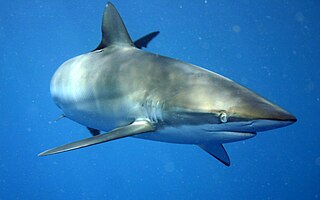 W
WThe silky shark, also known by numerous names such as blackspot shark, grey whaler shark, olive shark, ridgeback shark, sickle shark, sickle-shaped shark and sickle silk shark, is a species of requiem shark, in the family Carcharhinidae, named for the smooth texture of its skin. It is one of the most abundant sharks in the pelagic zone, and can be found around the world in tropical waters. Highly mobile and migratory, this shark is most often found over the edge of the continental shelf down to 50 m (164 ft). The silky shark has a slender, streamlined body and typically grows to a length of 2.5 m. It can be distinguished from other large requiem sharks by its relatively small first dorsal fin with a curving rear margin, its tiny second dorsal fin with a long free rear tip, and its long, sickle-shaped pectoral fins. It is a deep, metallic bronze-gray above and white below.
 W
WThe oceanic whitetip shark, also known as Brown Milbert's sand bar shark, brown shark, lesser white shark, nigano shark, oceanic white-tipped whaler, and silvertip shark, is a large pelagic requiem shark inhabiting tropical and warm temperate seas. Its stocky body is most notable for its long, white-tipped, rounded fins.
 W
WLucina's shrew is a species of mammal in the family Soricidae. It is endemic to Ethiopia. The mammal's natural habitats are subtropical or tropical high-altitude grassland and swamps.
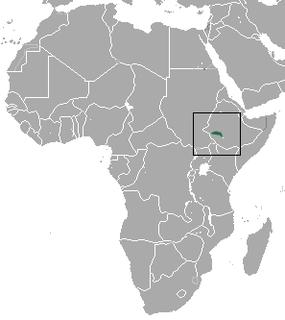 W
WMacMillan's shrew is a species of mammal in the family Soricidae.
 W
WThe snaggletooth shark, or fossil shark, is a species of weasel shark in the family Hemigaleidae, and the only extant member of the genus Hemipristis. It is found in the Indo-West Pacific, including the Red Sea, from southeast Africa to the Philippines, north to China, and south to Australia, at depths from 1 to 130 metres. This shark can be found near the bottom of the water column of coastal areas, but can be found at continental and insular shelves. Its length is up to 240 cm (7.87 ft). Despite being only vulnerable to extinction, this shark is very rarely seen.
 W
WHarwood's spurfowl is a species of bird in the family Phasianidae. It is a grey-brown bird with red bill and tail, and red bare skin around the eyes. Both sexes have similar coloring, although the female is paler in color with a more extensive buff belly.
 W
WThe smalltooth sand tiger or bumpytail ragged-tooth is a species of mackerel shark in the family Odontaspididae, with a patchy but worldwide distribution in tropical and warm temperate waters. They usually inhabit deepwater rocky habitats, though they are occasionally encountered in shallow water, and have been known to return to the same location year after year. This rare species is often mistaken for the much more common grey nurse shark, from which it can be distinguished by its first dorsal fin, which is larger than the second and placed further forward. It grows to at least 4.1 m (13.5 ft) in length.
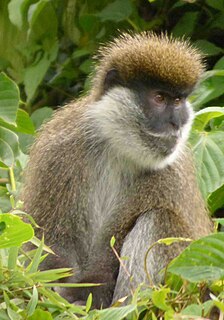 W
WThe Bale Mountains vervet is a terrestrial Old World monkey endemic to Ethiopia, found in the bamboo forests of the Bale Mountains. It was originally described as a subspecies of the grivet. All species in Chlorocebus were formerly in the genus Cercopithecus. The Bale Mountains Vervet is one of the least known primates in Africa. The Bale Mountains Vervet avoid tree-dominated and bush land areas as their habitat. These monkeys mainly reside in the bamboo forest of the Bale mountain due their dietary specialization on bamboo, however, other factors such as climate, forest history, soil quality, and disease could are likely to play a role in their choice to inhibit this area. The Bale Mountains Vervet have a very quiet behavior and tend to flee when coming across a human being.
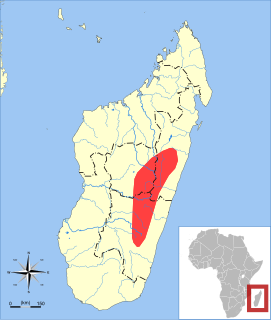 W
WThe web-footed tenrec, otter shrew, or aquatic tenrec is the only known semiaquatic tenrec, and is found in eastern Madagascar, especially in and around Ranomafana National Park. It grows to between 25 and 39 cm, and was once thought to be extinct. It feeds on crabs, water insects, and crayfish. It weighs between 40 and 60 grams, and the population is considered vulnerable. It was formerly placed in the monotypic genus Limnogale, but has been moved to Microgale based on molecular data showing it to be deeply nested within the latter.
 W
WThe pink whipray is a species of stingray in the family Dasyatidae, with a wide but ill-defined distribution in the tropical Indo-Pacific from southern Africa to Polynesia. It is a bottom dweller that generally inhabits shallow water under 70 m (230 ft) deep, in sandy areas associated with coral reefs. Individuals exhibit a high degree of fidelity to particular locations. The pink whipray has a diamond-shaped pectoral fin disc wider than long, with a broad-angled snout and a very long, whip-like tail without fin folds. It has only a few small thorns on its back and is uniform brownish to grayish pink in color, becoming much darker past the tail sting. This large ray can reach 1.8 m (5.9 ft) across and over 5 m (16 ft) long.